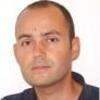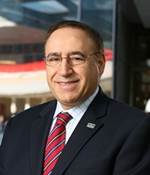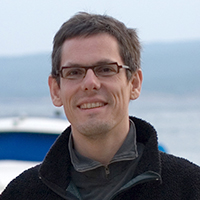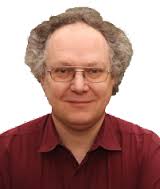- Home
- Objective
- Keynote Speakers
Mohamad Sawan Canada Research Chair in Smart Medical Devices Polystim Neurotechnologies Laboratory Polytechnique Montreal, Canada
Prof. Mohamad Sawan
Fabrice Wendling (PhD) holds a position of Director of Research at INSERM

Prof. fabrice Wendling
Metin Akay is currently the founding chair of the new Biomedical Engineering Department and the John S. Dunn professor of biomedical engineering at the University of Houston

Prof. Miten AKAY
Bart Bijnens

Prof. Bart Bijnens
ICREA Research Professor in the Department of Information and Communication Technologies at Universitat Pompeu Fabra (UPF)
Patrick Flandrin

Prof. Patrick Flandrin
CNRS "Research Director" at École normale supérieure de Lyon
Ghaleb Husseini Professor- AUS Chemical Eng. Department, Sharjah, UAE
 Prof. Ghaleb Husseini
Prof. Ghaleb Husseini
Peter Stadler Algorithms, Computing in Mathematics, Natural Science, Engineering and Medicine, Bioinformatics University of Leipzig ,
 Prof. Peter Stadler
Prof. Peter Stadler- Invited Speakers
- Partner Universities
- Lebanese University, LU, LB
- Saint Joseph University, USJ, LB
- Notre Dame University, NDU, LB
- Rafic Hariri University, RHU, LB
- Islamic Univ. of Lebanon,IUL, LB
- Saint Esprit of Kaslic Univ. USEK, LB
- More...
- Modality and submission
Paper presentation and submission

The conference will consist of oral presentations of fifteen minutes with few plenary sessions. All submitted papers will be peer reviewed. Accepted papers will be published as a collective work in an electronic format and will be submitted for inclusion to IEEE Xplore

Bart Bijnens ICREA Research Professor in the Department of Information and Communication Technologies at Universitat Pompeu Fabra (UPF)
Title: Where engineering meets clinical practice: understanding the working of the heart in health and disease
Abstract: Contemporary research in cardiovascular medicine is aimed at both the understanding of the fundamental properties of the cardiovascular system and its changes with disease, as well as providing evidence-based guidelines towards best clinical practice. Linking basic understanding with clinical practice is the objective of translational biomedicine, in which "reality-driven" research is key, underlining the concept that direct human observations are essential for the study of hypotheses relevant to human reality. However, reality-driven biomedical research is accompanied by important hurdles since interpreting complex observations and linking these to relevant basic and clinical understanding of the human and their diseases require an interaction of basic scientists from all disciplines, technologists and computer scientists and clinical specialists, all speaking different languages.
This can only be achieved by integrating engineering/physics/mathematics knowledge with physiology and clinical medicine in a strongly interdisciplinary research environment. For understanding the working of the heart in health and disease, this is approached by integrating and improving information acquisition, handling and processing techniques, combined with basic knowledge on pathophysiology, in order to advance clinical sciences. Starting from a clinical problem, we obtain realistic patient data (mainly from medical imaging modalities) providing information over the cardiac and vascular anatomy, function and remodelling induced by disease. This comes from the standard clinical data and tools as well as contemporary approaches to produce highly detailed data, on the macro- as well as the micro-structure, for research purposes. On the one hand, this information can be used in statistical (atlas-based) approaches and on the other hand for computational modelling of the cardiovascular. These models go from ‘simple’ lumped models to high-resolution complex finite element approaches, always with a goal to provide a systems medicine approach towards understanding a pertinent clinical problem and its potential therapies. For studying the vascular systems, 0D and 1D models, describing pressure-flow relations, as well as Computational Fluid Dynamics applications are investigated to e.g. study dissections of the aorta or remodelling of the vasculature induced by insults during fetal development. For assessing the heart, different approaches allow to address different applications. With lumped models, cardiac function and especially its adaptation to different conditions (e.g. exercise, coronary artery disease,…) can be assessed. Using finite element approaches, both the detailed electrical activation as well as muscle deformation and overall performance can be simulated, for example in case of abnormalities of the conduction system. These approaches can also be used in modelling the anisotropic behaviour of individual cells.
We will provide an overview of these approaches, focussing on several clinical problems and illustrating how engineering approaches can complement clinical research and lead to improved understanding and patient management.Biography:
Bart Bijnens graduated as Master of Electro-Mechanical Engineering Sciences at the KULeuven, Belgium, and obtained a PhD in Medical Sciences on advanced echocardiographic data acquisition and analysis. He became Associate Professor at the Medical Faculty of the KU Leuven, where he established a Cardiac Imaging Research Group. He extended his experience in a mixed research/hospital management position in St. George’s Hospital in London (UK) and established a new interdisciplinary Cardiology-Engineering research group in Zagreb (Croatia). Currently he is ICREA Research Professor at the Universitat Pompeu Fabra, Barcelona, Spain where he is performing multidisciplinary research in cardiovascular patho-physiology and image analysis/modelling. His research interests are Translational Cardiovascular Pathophysiology, focussing on assessing cardiac function and understanding and recognising the changes induced by disease and how treatment strategies can be used to modulate this remodelling. He is author of >160 peer reviewed papers in International Journals (both in Medicine and Engineering) having an h-index >36 (ISI) and 46 (Google Scholar), >70 full proceedings papers in International Conferences and over >350 abstracts at International Conferences and >130 invited lectures. Most of the research was performed in the field of Cardiac Imaging, Mechanics and Physiology and in close collaboration with clinical researchers. He is involved in several research project, among which the EU FP7 project VP2HF investigating computer model derived indices for optimal patient-specific treatment selection and planning in Heart Failure.
- Keynote Speakers









 Mohamad Sawan
Mohamad Sawan